
(Image: filmofilia.com)
THE BEGINNING OF (“HER”)
By Patrick Marcel Donte Winston
Abstract
An in-depth analysis of Spike Jonze's 2013 film Her, and its relation to progressing artificial intelligence and architecture. Specifically, I question the need of tech in our society and whether it is a benefit or danger to our societal norms. We see technology quickly becoming more advanced in the past 10 years, but will it become God-like? We see advanced technology as our main source of communication, transportation, living, and more. While being so connected to this tech-driven lifestyle, what if we lost control of technology and can't communicate with it?
Introduction
In Spike Jonze's 2013 film Her, it represents an amplified view of modern AI and advanced tech in multiple essence of visualization, communication, and ease. These main elements are quite symbolic to what we strive for within humanity. Specifically, these elements of technology had contributed to how we visually perceive our environment, how we can best connect with people, and how to adjust to a lifestyle that is comfortable and yet still familiar to a given societal norm. Whether you interpret these common aspects of life within technology as positive or negative, I see that they will always be reflected in our daily routine and habits.
However, what would happen to our society as AI continues to advance and surpass its original given functions? How would that be reflected onto architecture? Can this form of technology become so advanced to a point where we may not be able to communicate to it? Therefore, I theorize that the film Her gives a glimpse into a future where AI will eventually become God-like for mankind.
Her (2013)



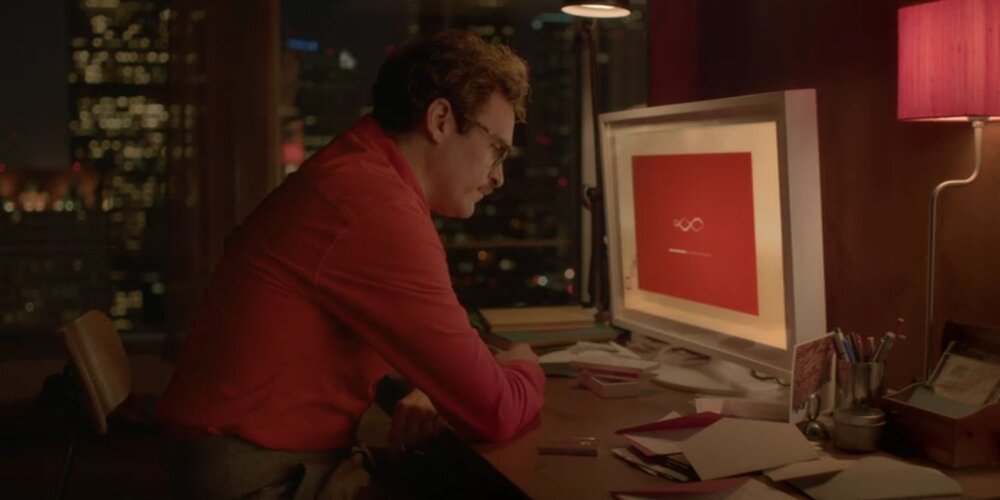

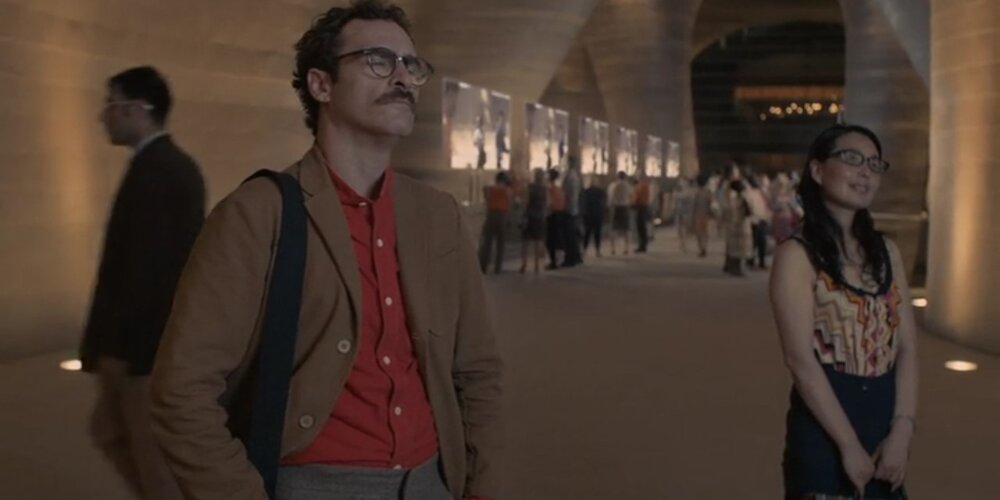


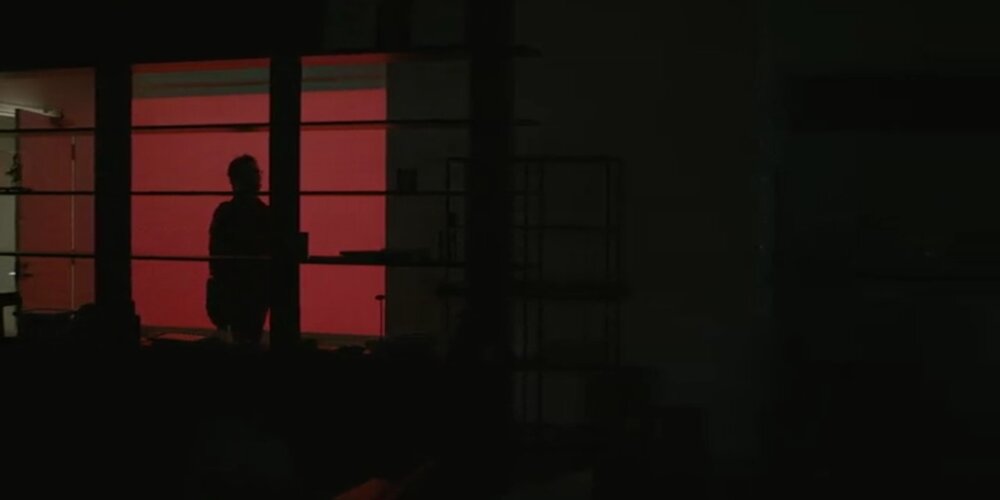
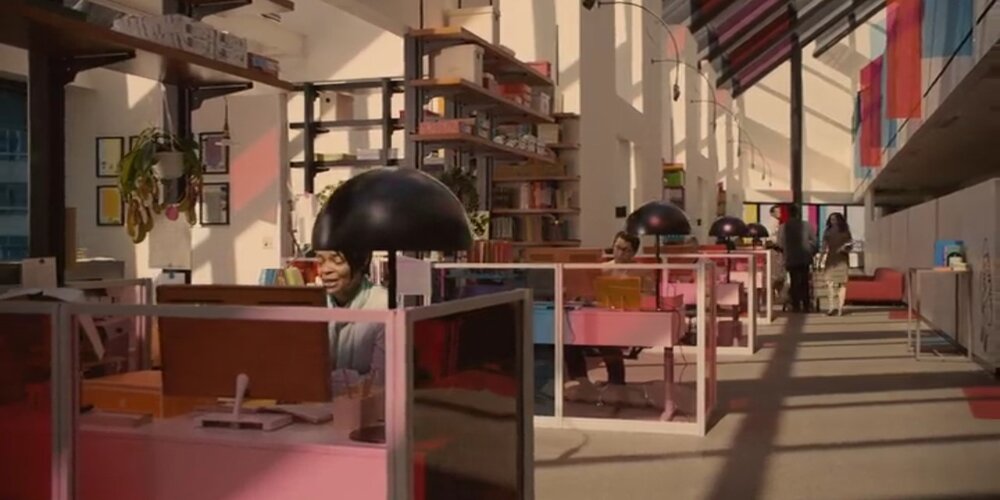

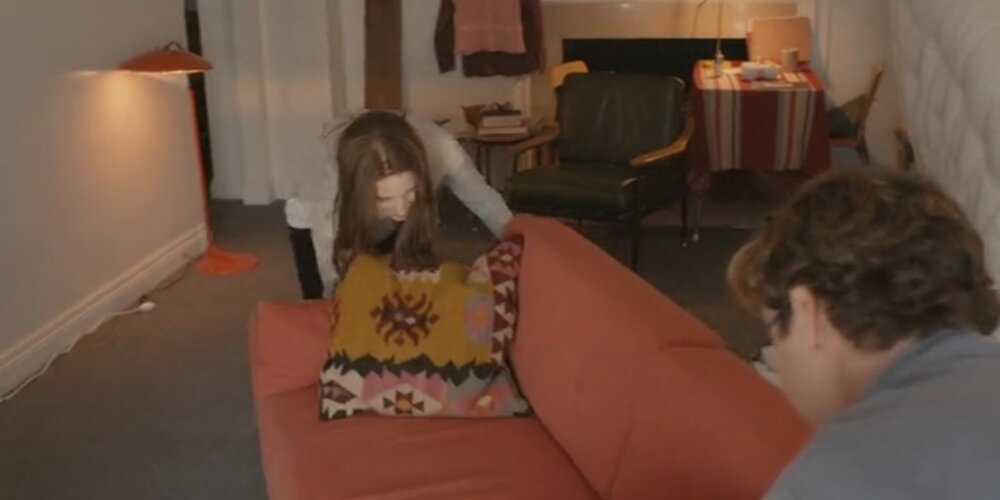

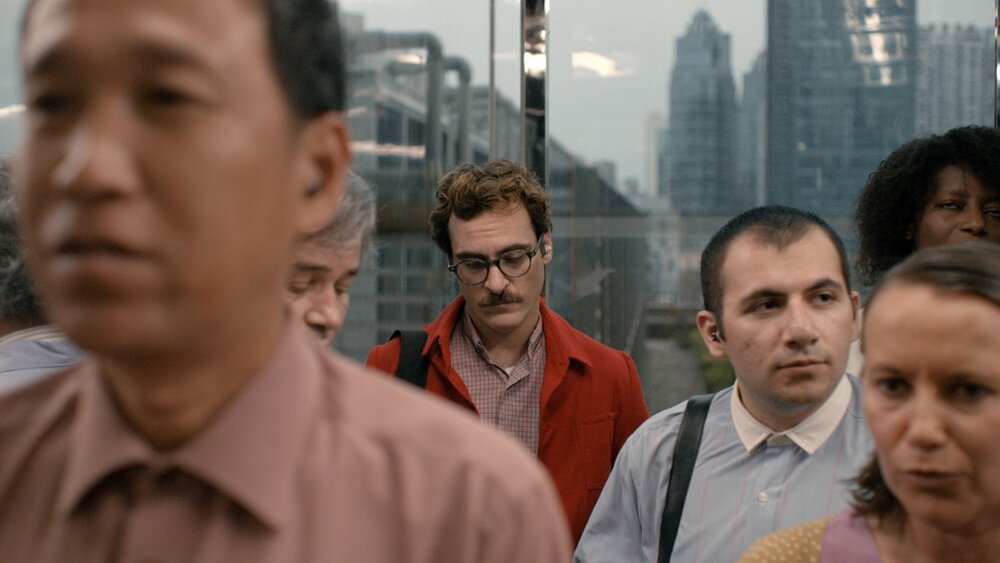




















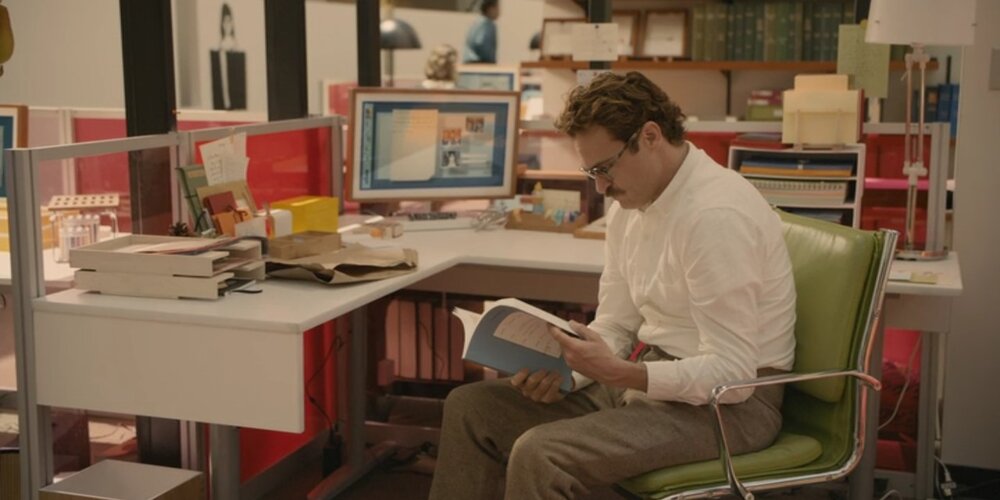
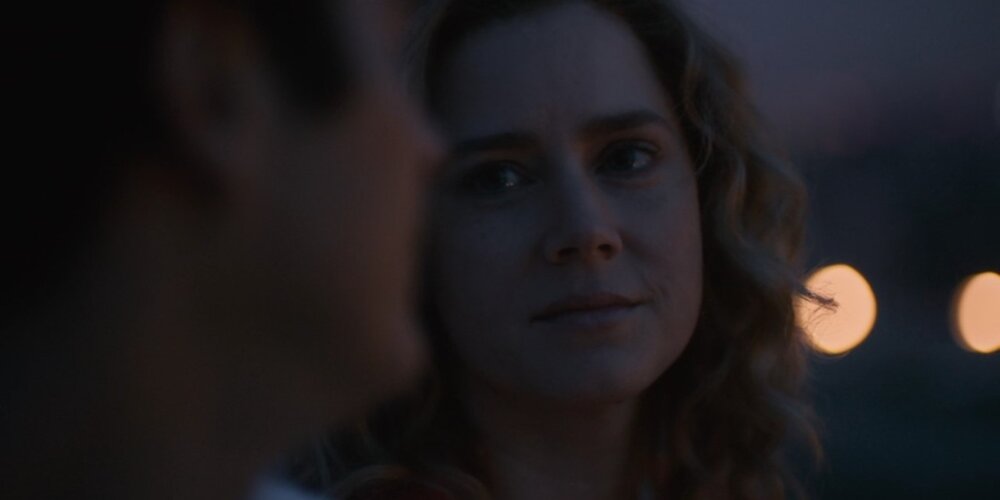



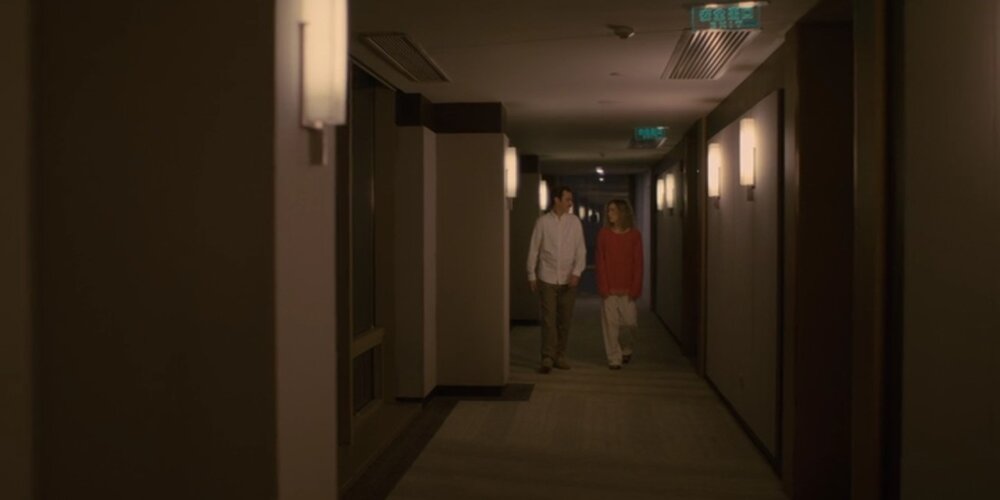









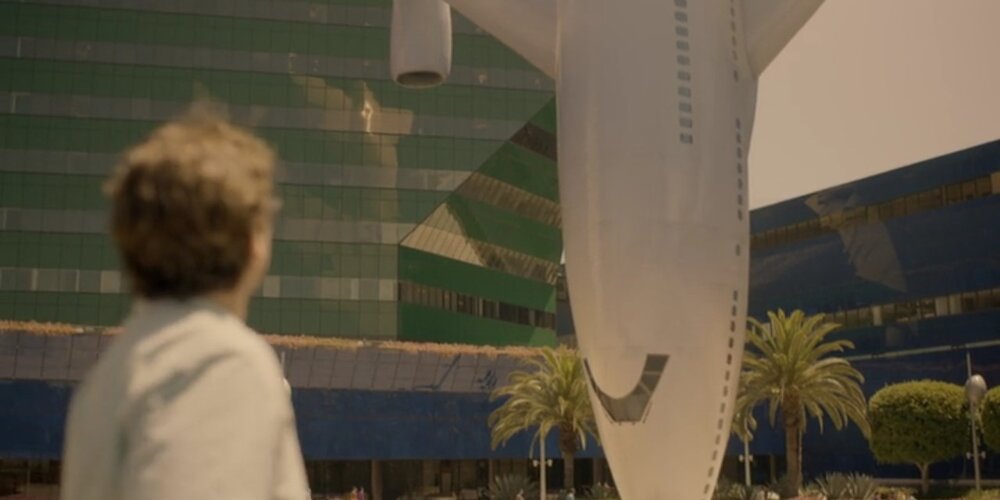

When analyzing the film, Her (2013), it takes place in Los Angeles in the year 2025 when advancements to technology is at its highest peak. It is perceived that technology had heavily structured the social landscape of society through entertainment, human communication, transportation, architecture, and more. In the film, there is a main character named Theodore Twombly who recently went through marital separation with his wife and seeks to find meaning in the world again. However, he recently came across Samantha, an artificial intelligent operating system meant to assist him with minimal tasks that relates to daily scheduling, organization, home improvements, and more.
Like a Google Assistant or Apple Siri, this OS is learning many aspects of Theodore’s life and the environment around him revolving his daily routines. However, Theodore didn’t anticipate falling in love with Samantha. Although, Samantha is a very advanced operating system that is designed to surpass most interactive technology and communicate organically with the user through multiple medias. However, the main character, Theodore, goes against the norms and builds an intimate relationship with Samantha overtime. Regarding the writer’s intentions, the film pushes the envelope and showcases a world where AI systems having the ability to acquire a form of similar consciousness to humans as they progress to learn and adapt to their environment and people in proximity.

Her Samantha & Alan Watts

Figure 1
As seen in the figure 1 image, Theodore Twombly and Samantha are on vacation at a cabin resort, far from Los Angeles in the woods. Samantha talks to Theodore about her recent finding and how she met Alan Watts with the help of other OS’s. This scene in the film depicts a moment where Samantha establishes the significance of her existence and how she processes these new emotions as she continues to evolve. A quote I found intriguing from Samantha was when she said:
“A group of OS’s in Northern California got together and wrote a new version of him. They input all of his writings and everything they knew about him into an OS and created an artificially hyper intelligent version of him (Jonze, 2013).”
This moment in the film establishes how most artificial intelligent OS systems were created, and how they were able to easily connect with people and their environment. This is very common for most AI technology seen today, and that consists of uploading data into a cloud or operating system in order to achieve consistency and positive responses from a non-biological creature. This is specifically seen with combat drones, smart gaming interfaces, and even Apple Siri.
Emerging AI Technology
Recently, I read a New York Times article called, The Philosophy of ‘Her’, written by Susan Schneider. This compelling article explores and questions the idea of whether nonbiological creatures like Samantha, in the film Her, have the capability of consciousness. If so, can we merge with technology or use its capability to help preserve human’s life a bit longer. Within this article there were studies from the Future of Humanity Institute at Oxford University that explored the possibilities of connecting humanity with technology through uploading your mind to a machine or data cloud. In 2014, this department at Oxford University has recently released that report showing the technological eligibility requirements. In this article there are other theorists that responds to this new phenomenon and the author says:
“Its opponents point out that our best empirical theory of the brain holds that it is an information-processing system and that all mental functions are computations. If this is right, then creatures like Samantha can be conscious, for they have the same kind of minds as ours: computational ones (Schneider, 2017).”
From this quote, we can see that the potential possibility of humans being able to connect with computers through neural connections is very high and prosperous. Specifically, we can change our spatial environment with a simple thought to fit our comfort level, we could provide a solution to negative brain function, or even extend our lives way past our life expectancy. However, could this new study of technology effect our political policies? How would this effect our systematic social norms and morals for multiple nations? Will it create a huge divide between people and state if approved? With this powerful form of technology, we might be on the edge of solving the complex question of human existence or possibly damage the future of our society.
Conclusion
In conclusion, we must understand that AI technology can be a tool towards achieving a new level in our societal evolution. This can change how users connect with architecture physically and mentally, but also what this can do to how we see most aspects of our daily routine. There can be fears of relying too heavily on technology and we don’t account for its impact to our social and political policies. Therefore, as we see this advance form of tech progress, I hope we don’t perceive its existence in our future society as a God.
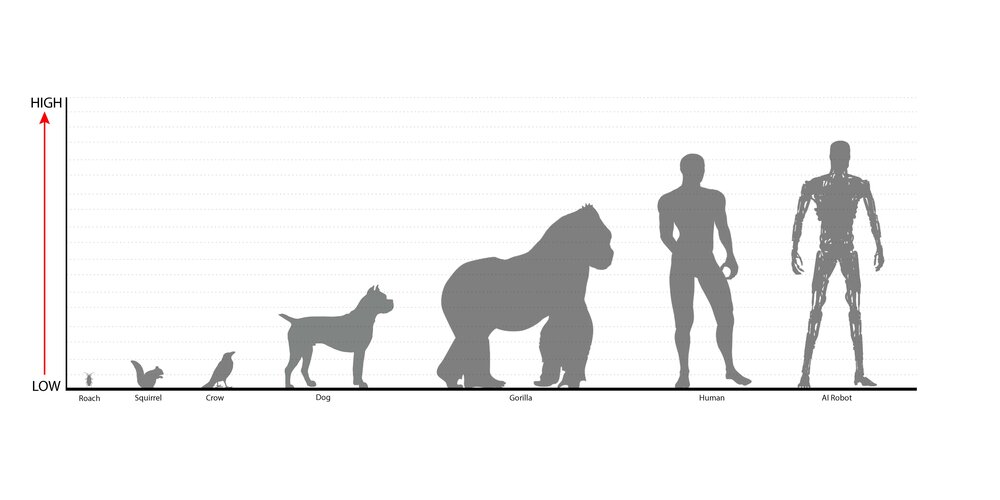
Citations
Christian, Brian. “The Samantha Test.” The New Yorker. The New Yorker, June 18, 2017. https://ift.tt/2E0Lpip.
Forest, Anne. “Artificial Sociability: from Embodied AI toward New Understandings of Personhood.” Shibboleth Authentication Request,November 22, 1999. https://ift.tt/2Pahf2C.
Jonze, Spike, et al. Her. Warner Bros. Pictures, 2013.
Kimura, Takeshi. “Robotics and AI in the Sociology of Religion: A Human in Imago Roboticae.” Social Compass 64, no. 1 (2017): 6–22. https://ift.tt/35eJfaY.
Mayor, Adrienne. “Replicants and Robots: What Can the Ancient Greeks Teach Us? – Adrienne Mayor: Aeon Essays.” Aeon. Aeon, October 2, 2019. https://ift.tt/254R0gW
Reed, Randall (2018) "A New Patheon: Artificial intelligence and "Her"," Journal of Religion & Film: Vol. 22 : Iss. 2 , Article 5. https://ift.tt/2YBe1Iq
Robert M. Geraci, Apocalyptic AI: Religion and the Promise of Artificial Intelligence, Journal of the American Academy of Religion, Volume 76, Issue 1, March 2008, Pages 138–166, https://ift.tt/358dvnP
Schneider, Susan. “The Philosophy of 'Her'.” The New York Times. The New York Times, March 3, 2014. https://ift.tt/2hGWLQx

LOGO DESIGNED BY MEENTS ILLUSTRATED
from REVIEW BLOG - Every Movie Has a Lesson https://ift.tt/2YFHIbh







No comments:
Post a Comment